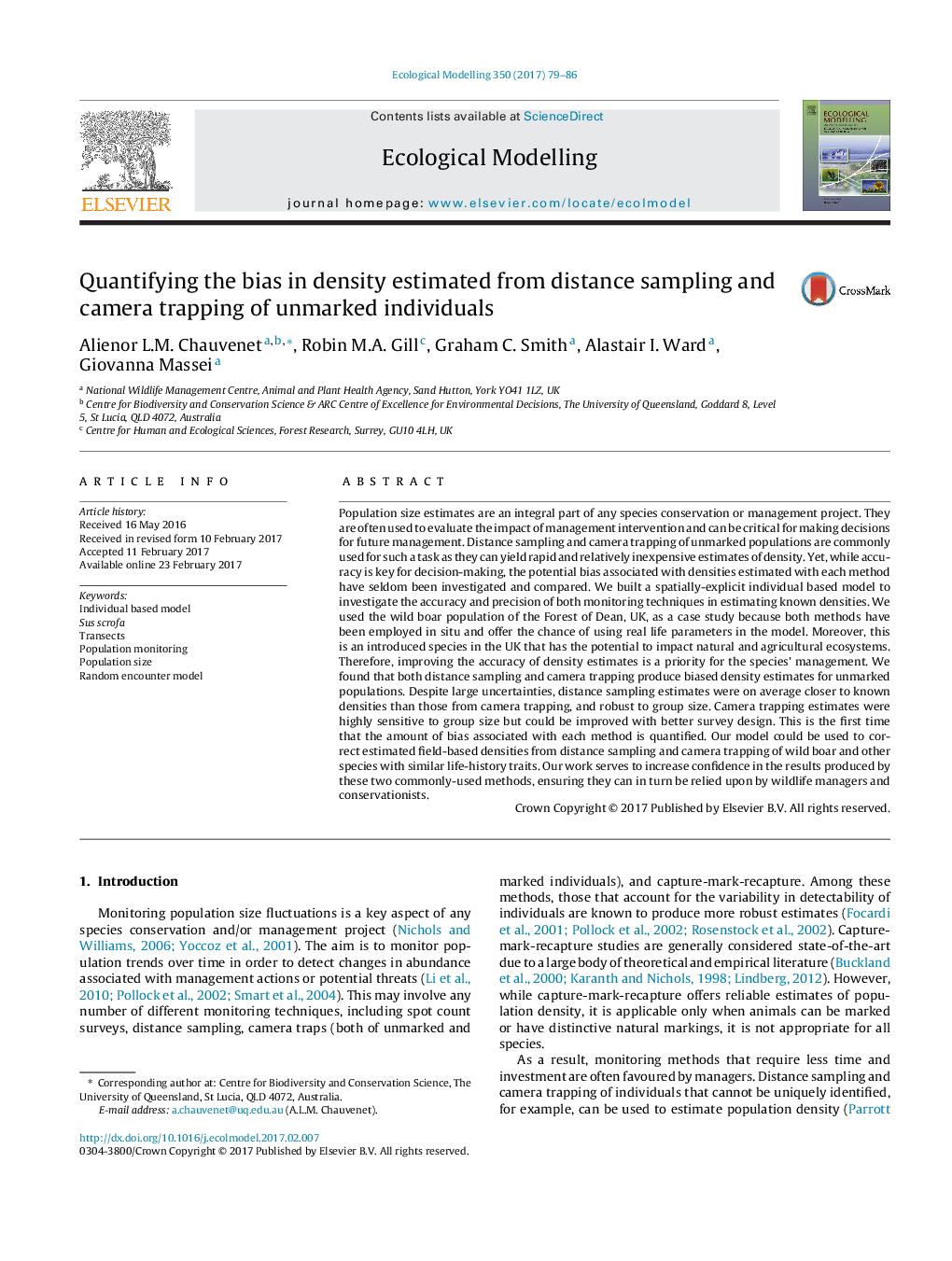| کد مقاله | کد نشریه | سال انتشار | مقاله انگلیسی | نسخه تمام متن |
|---|---|---|---|---|
| 5742236 | 1617397 | 2017 | 8 صفحه PDF | دانلود رایگان |

- We built an individual-based spatially explicit model of wildlife monitoring.
- We simulated distance sampling and camera trapping of unmarked animals.
- Distance sampling yield more accurate densities but uncertainty is high.
- Camera trapping densities are sensitive to group size and survey design.
- Our work informs on the group species management and conservation.
Population size estimates are an integral part of any species conservation or management project. They are often used to evaluate the impact of management intervention and can be critical for making decisions for future management. Distance sampling and camera trapping of unmarked populations are commonly used for such a task as they can yield rapid and relatively inexpensive estimates of density. Yet, while accuracy is key for decision-making, the potential bias associated with densities estimated with each method have seldom been investigated and compared. We built a spatially-explicit individual based model to investigate the accuracy and precision of both monitoring techniques in estimating known densities. We used the wild boar population of the Forest of Dean, UK, as a case study because both methods have been employed in situ and offer the chance of using real life parameters in the model. Moreover, this is an introduced species in the UK that has the potential to impact natural and agricultural ecosystems. Therefore, improving the accuracy of density estimates is a priority for the species' management. We found that both distance sampling and camera trapping produce biased density estimates for unmarked populations. Despite large uncertainties, distance sampling estimates were on average closer to known densities than those from camera trapping, and robust to group size. Camera trapping estimates were highly sensitive to group size but could be improved with better survey design. This is the first time that the amount of bias associated with each method is quantified. Our model could be used to correct estimated field-based densities from distance sampling and camera trapping of wild boar and other species with similar life-history traits. Our work serves to increase confidence in the results produced by these two commonly-used methods, ensuring they can in turn be relied upon by wildlife managers and conservationists.
Journal: Ecological Modelling - Volume 350, 24 April 2017, Pages 79-86